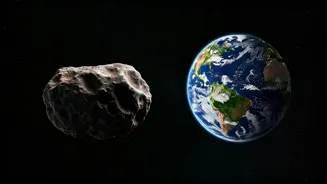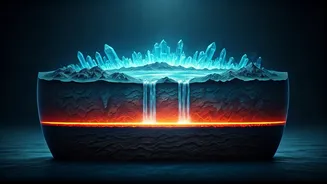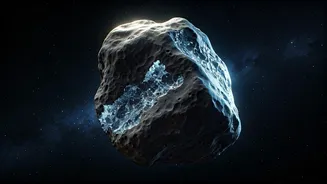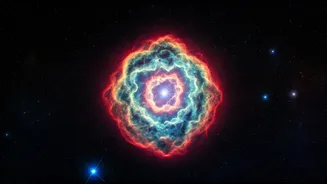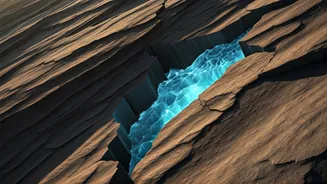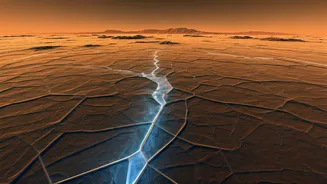Asteroid Sample Analysis
The research team meticulously analyzed samples collected from the Ryugu asteroid, a celestial body that has captured the attention of scientists. These
samples, brought back to Earth, offered a unique opportunity to study the composition of an asteroid. The initial analysis began, using advanced techniques to understand the nature of the materials present within the samples. Scientists examined the mineralogical makeup, searching for clues about the asteroid's past. They focused on finding evidence of water, which is a key component for life as we know it. The Ryugu asteroid's samples gave scientists a way to go back in time, allowing them to look deep into the asteroid's history, and reveal its secrets.
Water Flow Evidence Found
The scientists found significant evidence of ancient water flow within the Ryugu asteroid samples. This discovery provided a look into the asteroid's past. The evidence pointed towards the presence of water over a vast period of time, revealing a complex hydrological system at play. Detailed examination of the samples showed that water interacted with the asteroid's minerals, leading to chemical changes and the formation of hydrated minerals. The findings showed a history of interactions between the asteroid and water. This provided insight into the environment the asteroid had and how it evolved over billions of years. The water wasn't a one-time event, but instead a continuous presence that had a deep effect on the asteroid's composition and structure.
A Billion-Year Timespan
The research revealed that the water flow within the Ryugu asteroid had persisted for an astonishing one billion years. This extended period highlights the long and complex history of the asteroid. Over this time, water continuously interacted with the asteroid's material, leaving its mark on the overall composition. The billion-year timescale offered new perspectives on the asteroid's past. It suggested that there was a long-term water source, that likely sustained this flow. This continuous exposure had significant impacts on the asteroid's evolution. It formed unique mineral structures and altered the overall makeup of the asteroid. Scientists realized that this extended period of water flow created a stable and dynamic environment.
Implications for Solar System
The discovery regarding the Ryugu asteroid holds significant implications for understanding the solar system's evolution. These findings provide key information about the origins and distribution of water. Asteroids, like Ryugu, may have played a critical role in bringing water to the early Earth. This, in turn, may have enabled the emergence of life. This research promotes the idea that water, a key component for life, is not isolated to our planet. It is distributed throughout the solar system. By studying asteroids, scientists gain insight into how celestial bodies formed and the processes that shaped our planetary environment. The insights into Ryugu's water history improve our understanding of water's role in the solar system, possibly expanding the search for habitable environments beyond Earth.
Future Research Directions
The research on Ryugu's water flow offers a foundation for additional studies. Scientists are interested in conducting more in-depth analyses of the asteroid samples. The focus will be on further understanding the water's source and its interactions with the asteroid's minerals. Future studies might involve examining the types of organic compounds present in the samples. This would offer important details on the potential for the origin of life. Additionally, researchers may look for similar investigations of other asteroids and celestial bodies. This will provide more clarity on how common water is in the solar system. By using these new approaches, scientists will learn more about the formation and evolution of water in the cosmos.


